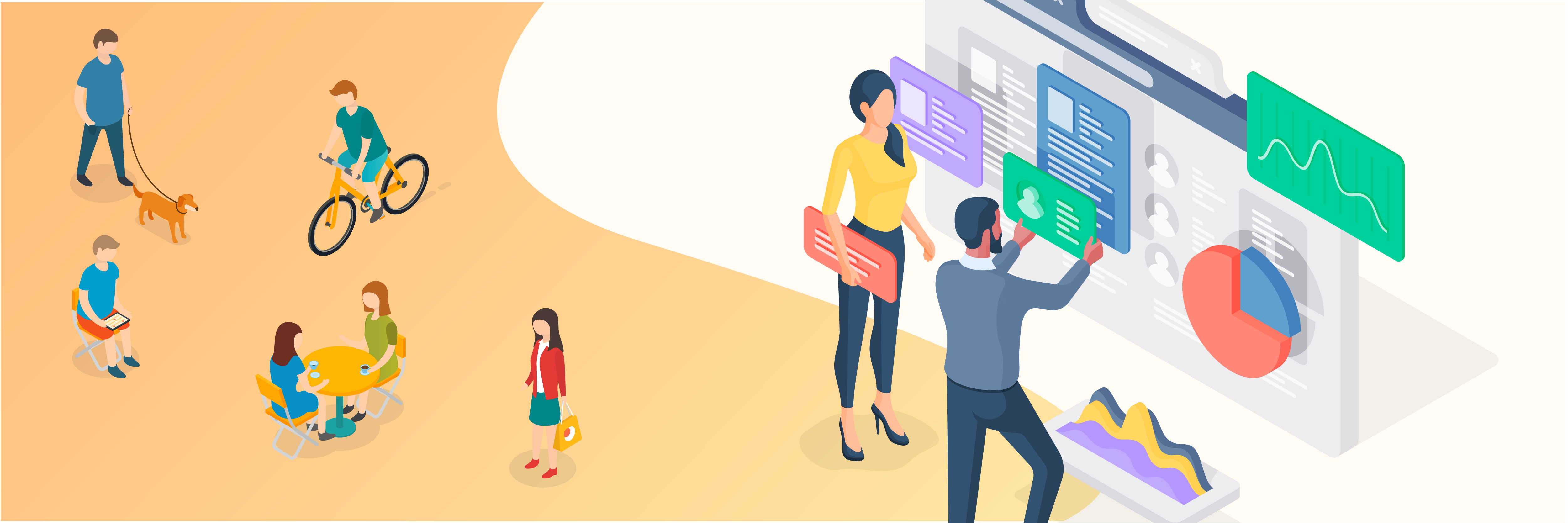Onboarding the Zeta Way | Discovery

Overview
By identifying a list of your People, Events, and Resources. Zeta can help provide guidance on how to onboard your data specific to your vertical. Check out some pre-defined Verticals below:
Retail
Hospitality
Automotive Services
More to come…
The Zeta Marketing Platform makes sophisticated, customer-centric marketing simple. This guide will help you to discover the key concepts that power the platform and enable you to drive superior marketing outcomes. Let’s get started!
Data That Fuels Marketing
The ZMP focuses on core data elements to build a complete understanding of your customers and prospects, enabling optimal strategies for acquisition, retention, and growth. New clients are asked to review foundational data constructs during onboarding. In the context of the ZMP, "People," "Events," "Resources," and "Feeds" refer to specific platform components and functionalities.
People

At Zeta, we focus on the complete understanding of every individual person.
People refer to the client's users or customers who are a part of the ZMP's ecosystem. ZMP uses your knowledge of a person's interests, behaviors, and attributes, and enriches that understanding with what Zeta knows about the individual to offer unparalleled insight, segmentation, and extensibility for your view of the customer.
People within the ZMP have three important sub-components of the customer data: Identifiers, Contacts, and Person Properties.
Identifiers |
|---|
|
Examples:
|
Contacts |
|---|
|
Examples:
|
Person Properties |
|---|
|
Examples:
|
Some identifiers, such as email addresses or phone numbers, may also be used as contacts useful for messaging that individual.
New Field Creation
Zeta’s flexible, schema-less architecture enables new properties to be added or adjusted at any time, whether they apply to one, some, or all of the people (users) in your account. ZMP creates new person properties based on headers by using two methods:
The first method is to import a person-level file as a user or list upload, and new properties will be automatically created based on the file header.
The second method is to navigate to the Settings > Audiences > Customer Properties in the left-hand navigation.
Points to remember while creating new fields
|
Events

Your customers and prospects are doing things both online and offline that influence your marketing strategies. Events are how the ZMP captures activities like these and associates them with the people in your account.
As we process billions of events per day and enable powerful segmentation, timely individual triggers, deep personalization, and powerful analytics on them; events can overall be thought of as having a 1:M relationship from People. Every event is comprised of 4 components:
Who did the event? (Person)
When was the event? (Event Time)
What the event was? (Event Type)
What the object, context, and details of the event were? (Event Properties)
Event properties, like person properties, are extensible and allow new properties or values to be adjusted at any time, whether they apply to one, some, or all events
The platform automatically captures all events associated with campaigns deployed from ZMP across a wide range of interactions such as message delivery, message open, message click, message conversion, and more. The ZMP also can track different types of events, such as online orders, in-store purchases, and in-store visits, and gather attributes related to these events.
Point to remember
|
Resources

Finally, there’s the other stuff surrounding your brand that you need to refer to.
Resources are how the ZMP represents any non-person or event data that is necessary to assemble your marketing campaigns, understand and segment your users, or analyze the entities that surround your brand. While the same underlying architecture powers both, resources logically fit into two different categories: Recommendable Content and Relational Data.
ZMP offers two approaches to loading relational data; Resources or Feeds (‘Feeds’ are described below), but only one of these types, Resources, is utilized with the Zeta’s Recommendation API.
Each resource has a unique resource ID for lookups, a resource type, and a flexible set of metadata that can be configured per type.
Resources can represent virtually anything, and you can have as many different types as you need. Some of the most common resource types include:
Resource Type | Description | How These Resources are Commonly Used |
|---|---|---|
Digital Content | Articles, Webpages, Videos, and other digital content that may be viewed, recommended, liked, or shared. |
|
Products | Sellable goods and services bought by customers. |
|
Store Locations | Information about physical locations for your brand. |
|
Items | Tickets, Appointments, Reservations, or other objects your business accounts for that have association with a person. |
|
Occasions | Events, webinars, seminars, games, shows, concerts, or other occasions that are attended by customers and prospects. |
|
Sub-categories of a Resource can be created in ZMP. These are called Resource Groups. A Resource Group is a collection of resources with common characteristics that can be saved and managed together.
Each Resource Group is automatically assigned a unique ID for reference via API and can be found on the details page as Recs UID.
The Recs UID value is autogenerated from the name of the Resource Group when it is first created and is unique per account.
Feeds
Content Feeds enable relational data for personalization via a CSV file upload of non-user metadata, such as stores or products. Zeta can enable a content collection feature to help clients create and leverage up-to-date content feeds from a client’s website.
For example, product descriptions, pricing, and availability from a client’s site can be compiled in a feed. Feeds can be referenced anywhere ZML (liquid scripting) is available. Unlike Resources, Feeds are not supported by Zeta’s Recommendations API.
Omnichannel Marketing Activation
Once fully integrated with the people, events, and resources that comprise your brand experience, the Zeta Marketing Platform will enable you to efficiently deliver impactful and personalized marketing strategies. Here’s how we do it.
Experiences & Campaigns
The ZMP enables broadcast and experience-triggered omnichannel marketing.
Broadcasts are used to simultaneously message a set of people on a one-time or recurring basis, while experience-triggered campaigns are sent to an individual based on specified rules for triggering, configured via the Experience Builder.
Campaigns can be deployed in a wide variety of channels, including email, SMS, push notifications, on your website, and hundreds more as configured via Channel Manager.
Learn more about Experiences and Campaigns.
Segments & Lists
In order to manage subsets of people in your account for the purpose of analysis or messaging, ZMP enables powerful segmentation and list management tools to specify groups of customers and prospects.
Segments | Lists |
Segments are filtered sets of people that are maintained in the ZMP, configured through the Zeta Audience Explorer as rules based on the identifiers, contacts, person properties, and events exhibited by those people. | Sometimes you just need to reference a specific set of people, for example, to build out snapshot control groups, seed lists, or a one-time use audience. |
Because segments automatically update based on their definitions, there’s no need to repeatedly upload lists again and again that represent the same people. | Lists are not updated based on the initial filter criteria used to create them, though you can also use behavioral journeys defined in Experience Builder to add and remove people from lists. |
Learn more about Segments and Lists.
Marketing Assets
From the email templates and web assets that define your brand to images and marketing collateral that you create, your assets are the key building blocks for developing and optimizing your brand experience.
The Zeta Marketing Platform offers asset management for storing and organizing these components, including images, email templates, and other file-based assets.
The ZMP also gives you a space to create, store, and manage master templates using our Visual and HTML Editors. Underpinning this content management platform is powerful personalization through Zeta Markup Language and reusability and centralization of assets through Snippets and Templates.
Learn more about Marketing Assets.
